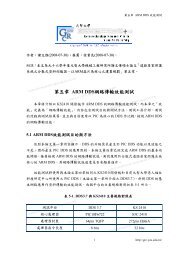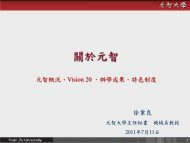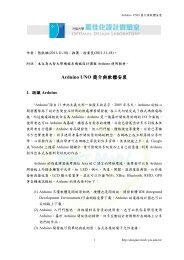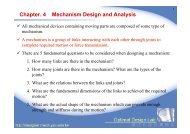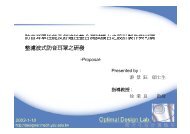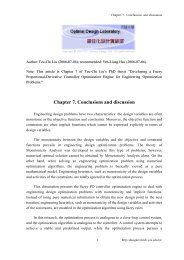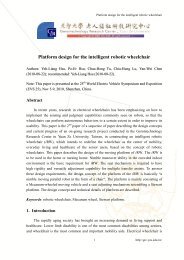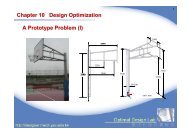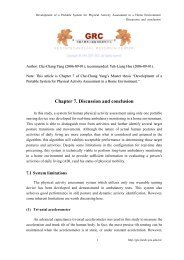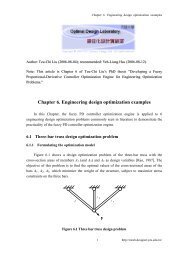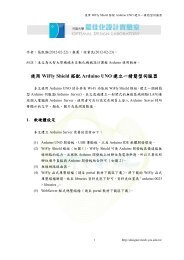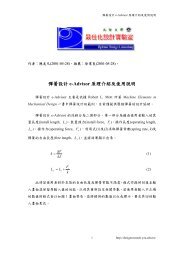PDF Version
PDF Version
PDF Version
You also want an ePaper? Increase the reach of your titles
YUMPU automatically turns print PDFs into web optimized ePapers that Google loves.
116 Yung-Chieh Hung and Yeh-Liang HsuFig. 7(a) Original design and (b) simplified design of the magnetic flux adjustment device3.5 New concept of the portable magneticimpact toolIn the original design of US Patent 6,918,449, theadjustment device of magnet flux consists of thechanging device and the bypass device, as shown inFig. 7(a). The changing device comprises a micromotor,a worm gear, and a pinion gear. The piniongear is mounted on the external peripheral surfaceof the bypass device. The bypass device can bemoved in a reciprocating manner in the axial directionof the driveshaft by driving the micromotor.Thus, the distribution of magnetic flux between themagnetic hammer and the magnetic anvil can bechanged.Figure 7(b) shows the derivation of the solutionusing principle 28 in TRIZ. Electromagnets are usedin the magnetic anvil, and the impact torque canbe changed by varying the distribution ratio of themagnetic flux by operating a switch for setting theoutput of the electric current value. In this concept,the electromagnet anvil has already replaced thefunction of the changing device and the bypassdevice.Figures 8 and 9 illustrate this new design conceptin more detail. The basic structure of the magneticimpact tool remains unchanged. The motor assemblycomprises a motor and a reduction gear, withan output shaft protruding from the reduction gear.As shown in Fig. 9, the magnetic hammer comprisesfour magnets, and the magnetic hammer rotateswith the driveshaft.The magnetic anvil comprises an axle unit that hasa bit hole for attaching a tool bit (not depicted) to thetip, and four L-shaped magnetic anvil arms. Themagnetic anvil arms are positioned at equal intervalsalong the circumference and are orthogonal to theaxle unit. The magnetic anvil has four solenoids asshown in Fig. 9. When the voltage is applied to thesolenoids, it generates a current in the solenoidsthat in turn produces a magnetic field. Therefore,by changing the electric current, the intensity of themagnetic field changes correspondingly.In order to provide electric current to the solenoids,there are two electroconvulsive metal ringspositioned in front of the output shaft of themagnetic anvil, as shown in Fig. 8. One of the electroconvulsivemetal rings has a positive electrodeand the other has a negative electrode. Rotationalforce is magnetically generated in a non-contactmanner by the magnetic anvil in conjunction withProc. IMechE Vol. 221 Part B: J. Engineering Manufacture JEM667 Ó IMechE 2007



